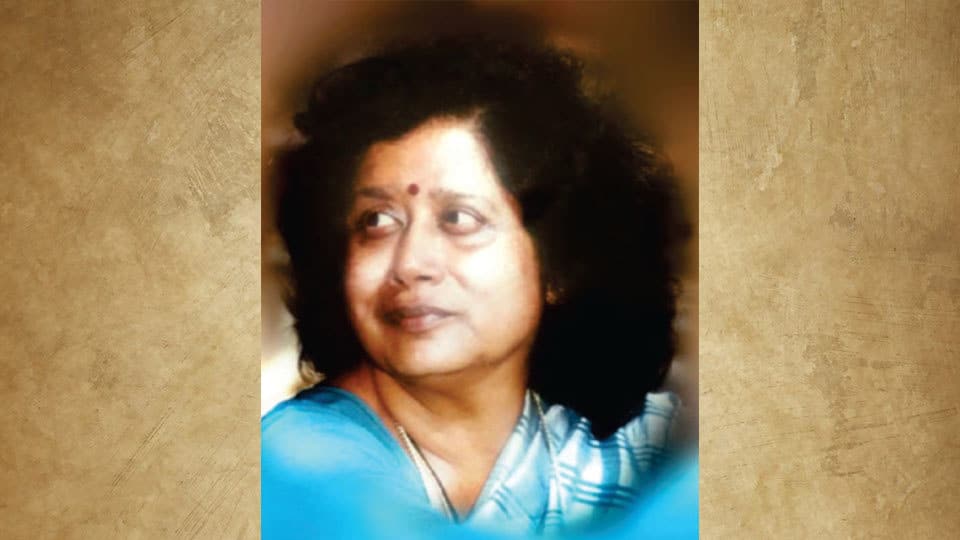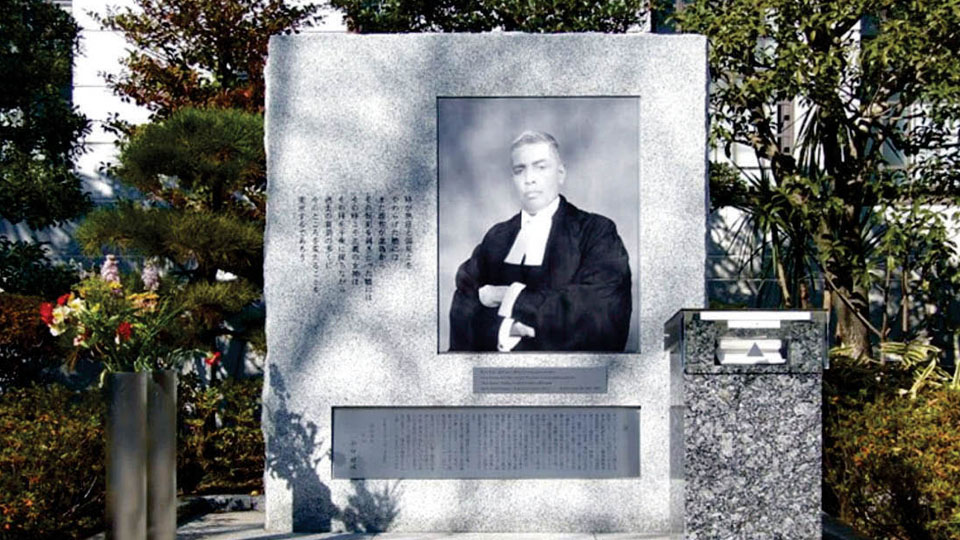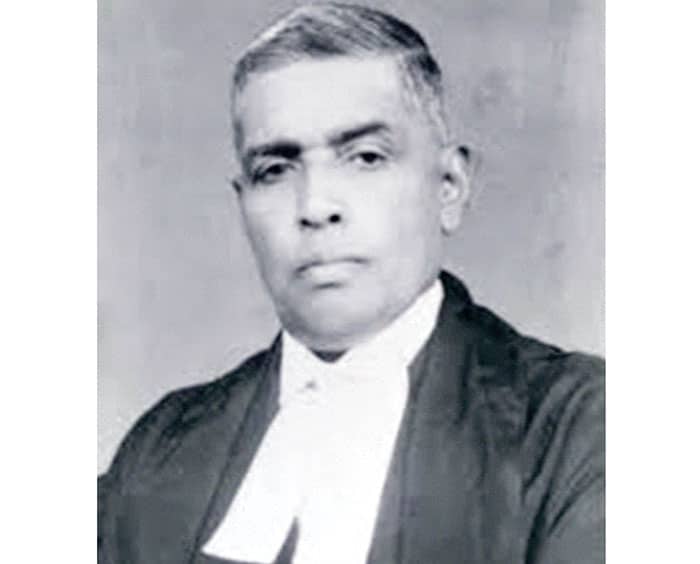A Tribute To Dr. Indra Amla
Her popularity as a Doctor was so much, some patients even named their daughters ‘Indra’
When Sam Cherian called me on Saturday morning and gave the news of Dr. Mrs. Indra Amla’s demise, I rushed to their house and paid my last respects to her. In the afternoon when I was sitting at home I remembered some of the events over four decades of association.
Dr. Indra Amla was always seen by us in CFTRI campus during 1972 (when I was a student) as a serious Doctor who spoke less and would go to her work at Cheluvamba Hospital and return for lunch and again go back to work in the evening in a Herald car, I think.
As a Doctor by profession, she was very busy as one could see. Her popularity as a Doctor was so much, I know some patients who have even named their daughters Indra in reverence to Dr. Indra Amla.
Over a period of time when I came back from the USA, Dr. Amla and family too had returned from USA after her stint at the World Bank. I was working as a Scientist at CFTRI and I saw her involved more with some of the Projects on Proteins and Nutrition at CFTRI and other Hospitals of Mysore, in spite of her busy schedule with the local Hospitals — especially pertaining to Nutrition and Paediatrics.
Many people at CFTRI came to know her more at that time. After I took over as Director, she used to bring us new thoughts with JSS Hospital involvement where she was working and after her retirement from Government service.
Her interest in the subject of ‘under-nutrition’ became more and more intense. We made a draft of a project towards that and sent it to the Government. But, like it happens to Governments, it did not move forward fast enough which frustrated Dr. Amla who once mentioned to me “How much does it cost? I will take care of the expenditure and let us move ahead.” It was a small project. That showed her commitment to children and women and to help them somehow. In the end, the project did not take off but Dr. Indra Amla’s passion to serve women and children did not die.
Over the years we used to visit Dr. Amla’s residence on Contour Road, Gokulam and later in Hinkal. She was an excellent host and conversationalist. And her conversations inevitably always led to something to do with service to society.
She had another side too — her love for animals, especially her two dogs Boney and Mint. After retirement the family settled in their own home near Hinkal in a small coconut grove. But the dogs were still attached to the CFTRI campus and would land up at the campus making their way from far off Hinkal. Dr. Amla, who would visit the campus for half-a-day would then meet the dogs on campus and indulge them in a sort of conversation, as if to know how their day went. She would then drive them back home, like a mother picking up her children after school !
Dr. Indra Amla was a committed worker not only during service but even after retirement. I feel with the passing of Dr. Indra Amla, the iconic era of exceptional women doctors who stood for a cause in Mysuru, has come to an end.
May her soul Rest in Peace.
source: http://www.starofmysore.com / Star of Mysore / Home> Feature Articles / by Dr. V. Prakash, Former Director of CFTRI and Distinguished Scientist of CFTRI / August 03rd, 2020
Forgotten In India – A Hero In Japan Justice Radhabinod Pal
The United States dropped an uranium atomic bomb on the city of Hiroshima on 6th August 1945. Nearly a lakh of civilians died instantly or were severely injured. Another plutonium atomic bomb was detonated over the city of Nagasaki on 9th August 1945 with a similar devastating effect. This resulted in Japan’s announcement of an unconditional surrender to the US Forces, on 15th August 1945. The supreme commander of the allied forces, Gen. Douglas MacArthur, received the formal instrument of surrender on 2nd September 1945 on the US naval ship Missouri, and he continued as the military administrator of Japan. The General arrested all the main decision-makers like the Prime Minister, Chief of Military and a number of others and imprisoned them. One of the main accused was General Hideki Tojo, Prime Minister of Japan (1941-44).
The US and the allied powers were keen to punish the top decision-makers in the Government and the military who started the war. They called them the war criminals. They constituted the International War Tribunal for the Far East, on the lines of the Nuremberg Trials of Germany. The Tribunal had eleven Judges drawn all over the Western world and British Commonwealth. The Judges came from England, France, New Zealand, United States, Philippines, India etc. Popularly known as the “Tokyo Trials”, the trials started on 14th May 1946 and lasted for two-and- a-half years. The final judgement was delivered in November 1948. The defendants included former Prime Ministers, Foreign Ministers and prominent military Generals who were involved in the decision- making to wage and continue the war.
The Tokyo War Trials were long and went on for more than two years. The trials had 816 sessions, more than 4,000 witnesses and 48,412 pages of transcripts. The sentences were pronounced in November 1948. Slowly each of the Judges pronounced the defendants to be guilty. The 11th Judge thundered “NOT GUILTY” and stunned ten other brother Judges and the whole Courtroom. The man who gave the dissent and exonerated all the accused was “Justice Radhabinod Pal” from India.
Justice Pal was born in a small village in present day Bangladesh and educated in Calcutta. He worked as a Professor of Law, retired as a Judge of Calcutta High Court and later was appointed as the Vice-Chancellor of Calcutta University. He was known for his legal erudition and expertise in international law. He was nominated as a Judge on the Tokyo War Tribunal by the then British Government of India in 1946. Justice Pal wrote a lengthy dissenting judgement of 1,250 pages. It seems that Jurist Pal rarely went out of his hotel room in Tokyo and personally typed his lone lengthy dissenting judgement. He felt that the trials themselves were illegal. He opined that like the European countries who had Colonies, Japan too was entitled to acquire its own Colonies. He pointed out that Japan cannot be tried for crimes against humanity. He felt that the large devastation and deaths inflicted by the American atom bombs were as much, if not greater, crime against humanity.
He gave a number of arguments terming the Tokyo War Trials as irregular and illegal. Justice Pal’s dissenting opinion was severely criticised all over the western countries. Pal’s view was “aggressive war was reasonable because it is about National Sovereignty”. He pointed out that the Western countries acquired their Colonies by brutal wars and hence did not have a moral right to stand in judgement. He was of the opinion that conquerors should not pass judgement on the conquered and the Tokyo trials were more of a victor’s revenge. In his judgement, Pal was very severe towards Japan too, but his criticism of the US was very serious.
The War Tribunal and the Western Governments did not like the dissenting opinion of Justice Pal and decided not to publish his 1,250-page-long judgement. Japan signed a Peace Treaty with the United States in 1952, and the military administration of Gen. Douglas MacArthur ended, and Japan was once again a sovereign free nation. Soon afterwards the Japanese Government published the 1,250-page-long dissenting judgement of Justice Pal.
Pal’s opinion that Japan was not legally culpable, was accepted and hailed by a large section and particularly the upper classes of the country. The Japanese society appreciated the courage and passion of Justice Pal. It is said thus Justice Pal’s opinion highly mitigated the shame and remorse felt by the Japanese people and particularly the ruling elite.

After the Tokyo Trials, Pal was elected to the UN International Law Commission, where he served illustriously from 1952 to 1966. Japan felt very grateful to Justice Pal. The Emperor bestowed on him the nation’s highest honour “Order of the Sacred Treasure” in 1966. He was invited twice more to Japan for lectures. The Government of India honoured him with the title “Padma Vibhushan.” After his death, the Japanese Government erected a memorial for Justice Pal in “YASUKUNI SHRINE”, which is a memorial for the National and War Heroes of Japan. When Prime Minister Abe visited India, he went to Calcutta to meet the son and family members of late Justice Pal.
For his dissenting judgement exonerating Japan, Jurist Pal was highly criticised and vilified all over the Western world. But Justice Pal had the courage of conviction to go against the opinion of all the ten of his fellow Judges and the wishes of the allied powers of the United Kingdom, United States and Russia. This Indian Judge showed exemplary courage in telling the world that in a war, there is no ‘good side’. Justice Radhabinod Pal is almost forgotten in India but remains a greatly admired and adored hero in Japan.
source: http://www.starofmysore.com / Star of Mysore / Home> Feature Articles / by Dr.C.D. Sreenivasa Murthy /August 03rd, 2020
Bengaluru-based startup StepOne launches national COVID-19 Telemed helpline
TS Raghavendra Prasad, founder, StepOne, said that this is an effective method to prevent overburdening of our healthcare workers.
Mysuru :
StepOne, a Bengaluru-based Startup has announced a 24×7 national COVID Telemed Helpline. The helpline will provide services related to COVID, non-COVID and mental health issues.
Citizens can call the helpline number 9745697456 anytime and get a call back from a healthcare expert in a few minutes to understand the needs of the caller. After the caller explains the symptoms, if required, a doctor would be put through to guide them further.
TS Raghavendra Prasad, founder, StepOne, said that this is an effective method to prevent overburdening of our healthcare workers. “We aim at serving people with their COVID, non-COVID and Mental Health query. Through a collective effort of 4000+ verified doctors, technologists, entrepreneurs and operators, we aspire to reach every nook and corner of the country and extend our support to the ones in need.”
“One can call on our helpline numbers which will provide with options to choose their symptoms, followed by a call with registered healthcare expert to confirm the findings. On the basis of these, our experts make recommendations to the individual as well as the government. So far, our volunteer doctors have been able to identify over 40,000 high-risk COVID-19 suspects and also managed to prevent about 3.2 lakh people from getting infected and we wish to continue our efforts in this direction,” he added.
“StepOne is an empanelled partner for telemedicine consultations on Aarogya Setu Mitr, an ancillary service on the Aaroya Setu app that enables free teleconsultation for those with COVID19-like symptoms. We are committed to providing high-quality healthcare to all communities in the long run and we see ourselves as a charitable online hospital which will ensure healthcare access to all regardless of their financial or social status,” said Raghavendra Prasad.
StepOne has also come up with a web-based tele-screening both that interacts with citizens who wish to share their symptoms and passes the information to a doctor based on the symptoms. It has also come up with a mental health helpline providing counselling to citizens for expressing their issues for appropriate resolutions.
For the next phase of expanding its services, StepOne plans to launch a mobile app for citizens of the country to share their symptoms with a doctor remotely for e-consultation and free of charge.
source: http://www.newindianexpress.com / The New Indian Express / Home> Business / by K Rathna / Express News Services / August 12th, 2020
Kannada study centre to be set up in Mysuru
The State government has decided to establish the Kannada Classical Language Study Centre on a 10-acre plot at the foot of Chamundi Hills in Mysuru.
A decision to this effect was taken at a meeting convened by Kannada and Culture Minister C.T. Ravi in Bengaluru on Friday.
The proposed land belongs to Mysore university, states an official release.
Mr. Ravi directed the authorities to initiate measures to ensure that the centre began work within one month. He warned that the government would not hesitate to initiate action against officials who delay the work.
source: http://www.thehindu.com / The Hindu / Home> Karnataka / by Special Correspondent / Bengaluru – August 07th, 2020
A glimpse of Malgudi at Arasalu station

Indian Railways develops ‘Museum Malgudi’
Passengers alighting at the Arasalu Railway Station in Shivamogga district can savour a slice of the imaginary town of Malgudi, created by writer R.K. Narayan, as depicted in the popular TV serial Malgudi Days.
Indian Railways has developed a museum on the station premises as some of the episodes of the Doordarshan TV serial, directed by the late Shankar Nag, were shot at Arasalu.
The ‘Museum Malgudi’ initiative features photographs and artworks associated with the serial and was inaugurated virtually by Minister of State for Railways Suresh Angadi on Saturday. The museum was incorporated into the renovation plan for Arasalu’s old railway station building as a tribute to the makers of the popular TV serial and the novelist, according to Aparna Garg, Divisional Railway Manager, Mysuru Division.
The old building stood on the metre gauge track and was abandoned after gauge conversion was carried out. Subsequently, it was developed as a museum at a cost of nearly ₹25 lakh. One of the sculptors and artists associated with recreating Malgudi at Arasalu during the shooting of the serial, John Devaraj, was roped in for development of the museum.
There are various scenes from the serial sketched on the walls, apart from portraits of R.K. Narayan and that of the character Swami played by Master Manjunath among the exhibits. A narrow gauge coach stabled at the station has been converted to a tea shop and named ‘Malgudi Chai’.
source: http://www.thehindu.com / The Hindu / Home> News> States> Karnataka / by Special Correspondent / Mysuru – August 08th, 2020
Chisel and cheer
Veteran sculptor H N Krishnamurthy’s artworks show vignettes from regular life, and yet appear striking in today’s context of the pandemic-ridden world.
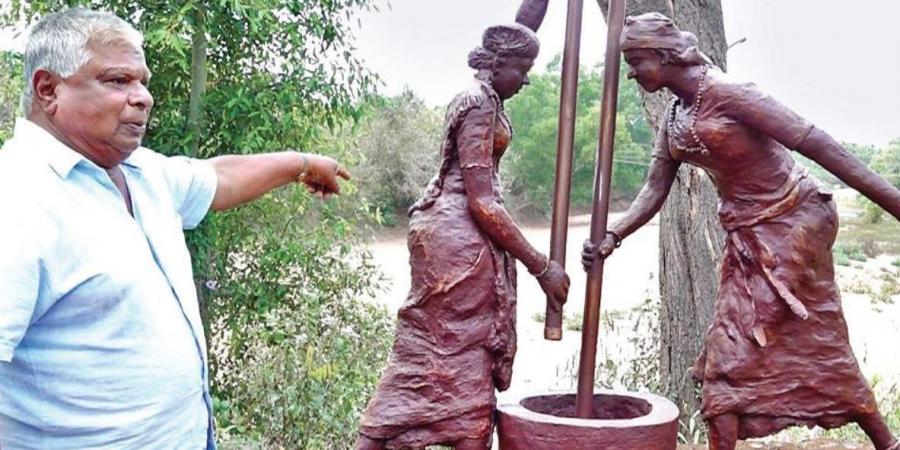
Bengaluru :
Veteran sculptor H N Krishnamurthy’s artworks show vignettes from regular life, and yet appear striking in today’s context of the pandemic-ridden world. His collection, ‘Malenadina Mukhagalu (Faces of Malenadu)’, currently on display at Fidelitus Gallery in the city, is timeless and yet timely. Created by him over the last 20 years, the cement and fibreglass sculptures are now standing tall to spread the message of positivity to viewers as well as fellow artists.
“Everyone is worried about Covid-19 but it feels good that art lovers can get some respite with this exhibition,” the Shivamogga-based artist told CE in an email interview. “It aims to fill confidence in artists and raise funds to help them, as well as rural students,” he added. The artworks showcase the rural and agrarian lifestyle of the region. “Many people in Bengaluru are from Malenadu, so they can relive their memories when they see the sculptures,” says the septuagenarian artist who studied at Santiniketan in the 1950s.
His passion for art began as a college student in Mysuru when he sketched a portrait of poet-writer Kuvempu. “He influenced me to pursue the field. He wrote a letter, recommending me to study at Santiniketan, where I got an opportunity to work with Padma Bhushan awardee Ramkinkar Baij. I still cherish those moments,” says Krishnamurthy, who still indulges in this passion. “I make small sculptures for my satisfaction and to also spend good moments with my family,” he says.
The current exhibition comprises 25-30 pieces, through the sale of which the gallery aims to support other artists and rural students. “The current situation caused by Covid-19 has shaken up everyone’s life. Artists are among those affected the most. We want to create hope among them and bring some relief to them, as well as art lovers, who have been confined within their homes,” says gallery founder Achuth Gowda, adding that about 20 per cent of the total revenue generated from this exhibition will be used for the education of needy rural students through Shilpa Foundation, while about 10 per cent of it will go for the benefit of artists.
Young artists today need to come up with creative ways to improve their financial condition, feels Krishnamurthy. “They need to understand different art forms, and variations between those, like contemporary and abstracts. All they need is time for recognition, and to show their work to the world. It’s a waste of time for them to store their collections,” he says. The exhibition is on at Fidelitus Gallery, BSK 2nd Stage, till August 20.
source: http://www.newindianexpress.com / The New Indian Express / Home> Cities> Bengaluru / by Express Nes Service / August 06th, 2020
Free online film festival, organised by The Federation Of Film Societies of India
Watch ‘Ghatashraddha’, ‘Thayi Saheba’ and ‘Kanasembo Kudureyaneri’ as part of a Girish Kasaravalli retrospective, which is on till August 2
The Federation Of Film Societies of India (FFSI) has organised an online film festival, Retrospective Of Girish Kasaravalli Films. The festival, which started on July 27 will be on till August 2.
The film festival is free and you can just click on the links to either watch the films or participate in the discussion. The film chosen for the festival are Ghatashraddha (which won the President’s Golden Lotus Award as the Best Indian Film of 1976, https://vimeo.com/441814975), Thayi Saheba (also won the President’s Golden Lotus award as the Best Indian Film of 1997, https://vimeo.com/441815434 ) and Kanasembo Kudureyaneri – Riding The Stallion Of Dreams- (This film won the President’s Silver Lotus Award as the Best Kannada Film of 2010, Netpac Award, Rome, Italy, https://vimeo.com/441815905)
That is not all. The Federation has also organised a live session with the director who will talk about the about the three film on July 31 at 5 pm. Girish will be joined by National Award winning film critic Professor N Manu Chakravarthy on https://event.webinarjam.com/register/45/ox82kcwl
Girish talks to MetroPlus about his films and the virtual world. Edited excerpts
Could you comment on the choice of films for the festival?
FFSI chose these films. I was keen that Koormavatara be chosen as it is also the 150 years of Gandhiji. I would have also loved it if my other films were chosen, but I am happy with this choice too. I don’t think many have watched Thayi Saheba or Kanasembo… As far as festivals go, I have observed that Ghatashraddha is a popular choice.
How do you think the online film festival will work?
It is an advantage for us. While the film industry is almost at a standstill because of the pandemic, there seems to be no space to screen old films. Every film festival looks for new films. Earlier the film society would promote films and send them to every festival, hence my works like Tabarana Kathe reached many. But gradually people started looking for the latest films and we lose the opportunity to reach out to a larger audience. This is a great platform for my work to reach out to people, especially Thayi Saheba, which is not available on DVD or on any streaming platform.
We just click on the links and watch the film?
Yes, it as simple as that.
On July 31 you will go live…
Yes, we will be discussing the three films in detail. The event will be moderated by the organisers and there will be a Q&A session too.
As everything is now virtual, do you feel there should be a pattern change when it comes to a director’s or an actor’s perspective?
I don’t think so. I feel this trend will last only as long as the pandemic. Cinema on screen is a different experience when compared to watching a film on your laptop or mobile. Especially those who watch mainstream cinema, will always prefer the theatrical experience as they do not go in for the content. So cinema on the big screen will never die. It may not get the reach of the virtual platforms, but it will not die out. It is just that the pattern has changed. Earlier films would run for 100 or 200 days. Today they run in theatres for a short time and are then released online. With the virtual releases I feel directors like me get affected. Those who make small budget films struggle to recover our investments. Now, with the pandemic, these issues have become acute that is all.
Tell us about your latest film, Illiralare Allige Hogalare …
The film is stuck due to this pandemic. It is sad as not many festivals are happening. And I wonder if the organisations that have postponed their festivals to next year will take this film as it will be an old film by 2021. Will they consider this film as a new one because of the pandemic? That is yet to be seen.
What has been the hardest for you to deal with during this pandemic as a director?
For film makers and actors, not having contact with the outside world can be frustrating. We lose the touch with the real world. All we get to know is through the news, which also sometimes can be manufactured. It makes the line between the real and concocted very thin. So all we do is read books, watch news or films, but how much can one do these? It is not good for anyone as we lose social connections and may lose the sense of what is right and wrong, what is happening and what is not.
source: http://www.thehindu.com / The Hindu / Home> Entertainment> Movies / by SSR / Bengaluru – July 28th, 2020
Sons and daughters of soil want to make a difference
His parents Veeresh and Sumithra, who were denied formal education, continued farming on their 10-acre land and had a small pandal business in Bagalkot.
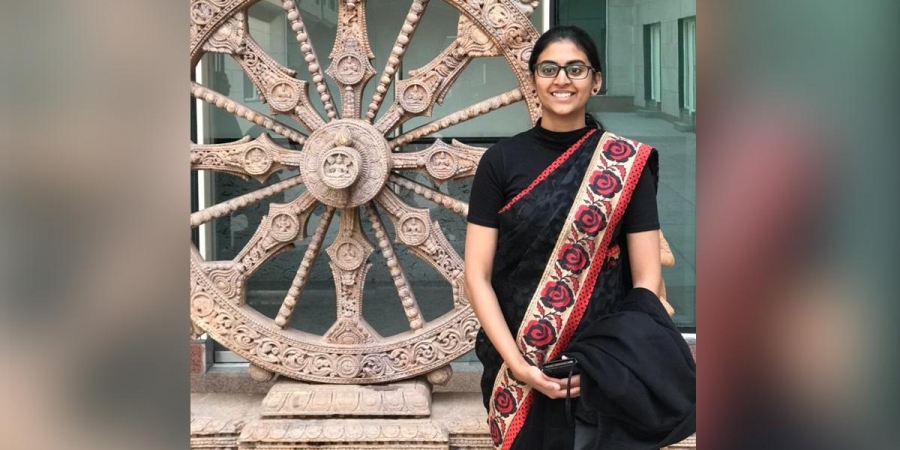
Bengaluru :
Although school dropouts themselves, parents of this 24-year-old Jamkhandi lad, continued to push him towards a fulfilling job as a ‘collector’. Anand Kaladagi secured an All India Rank 446 in the Union Public Service Commission, and is among the 43 candidates from Karnataka in the top 800.’
His parents Veeresh and Sumithra, who were denied formal education, continued farming on their 10-acre land and had a small pandal business in Bagalkot. “They pushed me to study well, which led me to clear the examination in the second attempt,” Anand told TNIE. The problems in his tier-two city served as further inspiration to clear the UPSC exam.
Anand had to leave his hometown to study mechanical engineering at Gogte Institute of Technology, Belagavi. He hopes to make a difference in the education sector. “Privatisation has gripped the sector, and making quality education accessible is my goal. I can strengthen the public education system — government schools and colleges — being in the service,” he said.
Mandya-based Dr Abhishek Gowda M J , who secured All India Rank 278 in UPSC, saw the services as an opportunity to nip health issues in the bud through effective policy implementation. Son of agriculturalist Javarayigowda and homemaker Jayamma, Dr Gowda completed his schooling at the Government Kannada Medium School in Maregowdanahalli, where the seed of being a civil servant was planted in him by a teacher.
source: http://www.newindianexpress.com / The New Indian Express / Home> Cities> Bengaluru / by Pearl Maria D’Souza / Express News Service / August 06th, 2020
Dadapeer Manjarla dead
Rajyotsava award-winning Tatvapada singer Dadapeer Manjarla died of prolonged illness in Manjarla village in Raichur taluk.
He was 55. He is survived by his wife, two sons and a daughter.
Manjarla, who was born into a Muslim family, took to singing Tatvapadas in both Kannada and Telugu to help spread national integrity.
source: http://www.thehindu.com / The Hindu / Home> News> States> Karnataka / by Staff Reporter / Yadgir – August 04th, 2020
